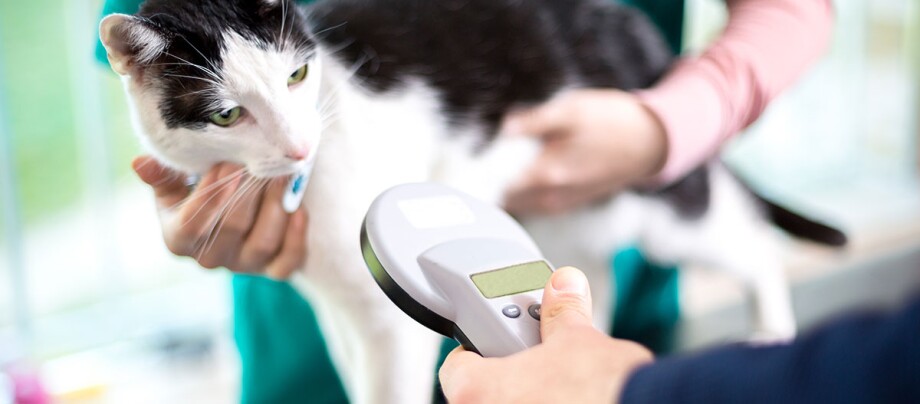Having Your Cat Chipped – for the Safety of Your Four-Legged Friend
07.10.2022 - Reading time: 3 minutes

Whether a house cat or an outdoor cat, it happens time and again that a cat runs away and is found on the streets. With a chip, cats can be quickly identified and their owner contacted. Then you can quickly get your pussycat back home where they belong.
Equipping cats with a chip: how does it work?
Chipping a house pet – usually dogs or cats – involves injecting a microchip, also called a transponder, under the skin. The chip is only about as big as a grain of rice. Typically the vet uses a syringe to insert the chip in the left side of the animal’s neck. This process takes only a few seconds and generally doesn’t cause any pain whatsoever. A 15 digit number is saved on the microchip:
- the three-digit country code (276 Germany, 040 Austria, 756 Switzerland),
- the manufacturer’s number and
- a unique code.
The cat’s chip lasts for a lifetime and does not need to be replaced.
Is chipping a cat risky for the animal?
No, normally chipping a cat is done without any complications. In unusual cases, there can be swelling or infection of the skin at the site of the injection. The material used to make the transponder is tissue-compatible. In a few cases, the chip has migrated to other areas of the body.
Where can I register the cat chip?
The insertion of the chip does not automatically register it. You have to do this as the pet owner. Often this can be done at the vet’s office. The chip is registered to one of the three large house pet registers. You can choose between:
- TASSO e.V. (no charge),
- FINDEFIX (no charge) and
- IFTA (fee required).
During registration, your contact information is saved so that you can be called immediately in the case of an emergency. Keep in mind that you should update you contact information if something changes. Even if the animal goes to a new owner, the data should be updated.
Why should I have my cat chipped?
Every year, thousands of cats disappear. Most are outdoor cats that can no longer find their way home and/or are involved in an accident. Often the cats end up in animal shelters because their owner cannot be found. With a chip, the owner can be quickly identified and contacted.
Tip: there are also cat flaps with chip recognition. The cat flap only opens when the cat registered by chip wants to enter. This helps you avoid unwanted visitors in your home.
Do cats have to be chipped?
No, you are not legally obliged to have your cat chipped – unless you are traveling abroad in Europe with your cat. Since 2011, the EU pet passport is only valid in conjunction with identification of the animal by chip.
Where can I have my cat chipped, and how much does chipping cost?
To have your cat chipped, take them to the vet. In addition to the charge for the service from the vet, there is also the cost of the chip itself. Generally, you can expect to pay between 40 and 70 euros.
Where can I have the cat chip read?
If you have found a stray cat and you would like to quickly notify the owner, you can have the chip read. To do so, you need a special reading device that every vet and almost every animal shelter has on hand. Once the number is read, the house pet registry discloses the owner’s contact data, and reunites the cat and the owner.





